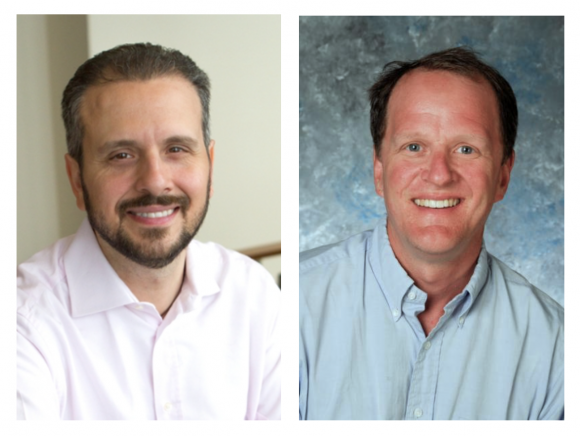Research: The Remedy for Today’s Ills A unique Chapman interdisciplinary, international study provides significant insight into the Coronavirus-19 pandemic.
March 30, 2020
As scientists and researchers around the world seek to understand the growing Coronavirus health crisis, a Wilkinson professor and Economic Science Institute presidential fellow, are reexamining a typically misunderstood aspect of the disease. So far, their research has shown that despite what young people may think, age is not a direct factor in COVID-19 mortality.
“A healthy 72-year-old seems to have as good a chance of surviving COVID-19 as a healthy 36-year-old,” according to Steve Gjerstad from the Economic Science Institute.
Chapman President Daniele Struppa helped bring together Dr. Andrea Molle (Political Science) and Dr. Steven Gjerstad (Economic Science Institute). Molle was already working on COVID-19 research with an Italian think tank. Gjerstad was working on forecasts of COVID-19 case growth. Molle and Gjerstad hopped on a Zoom call and began their joint research.

Dr. Andrea Molle (left) and Dr. Steve Gjerstad worked on this project together.
Their work was an interdisciplinary triumph, bringing together the humanities, economics, and health. “It was easy to work with Steve as we share the same language and passion for an analytical approach,” said Molle. “Steve brought statistical and computational expertise while I brought domain knowledge of Italy, its society, and politics to define our hypotheses and data mining strategies.”
By analyzing medical statistics from COVID-19 cases in China, Italy, and the United States, Molle and Gjerstad discovered that it was not age, but comorbidity factors – underlying chronic health conditions, like hypertension, diabetes, or cancer – that are the main factors contributing to Coronavirus mortality.
“The numbers we pulled from the Italian National Institute of Health (Istituto Superiore di Sanità) showed that 98% of a random sample of those who have died from COVID-19 in Italy had one or more comorbidity factors,” said Gjerstad.
The common misconception that age is a direct factor of COVID-19 deaths comes instead from its correlation to comorbidity. “Statistically speaking, comorbidity increases with age,” said Molle. “The older you get the more prone you are to acquire long-time conditions.”

(Photo Courtesy: Kevin Coombs/Reuters)
The issue lies with public statements that have been oversimplifying the causation of mortality from the virus, citing age itself as a comorbidity factor. Some media outlets are still reporting that all people over 60 generally have higher COVID-19 mortality, while government and health agencies have yet to make a clear distinction between age and comorbidity factors.
Molle and Gjerstad’s unique research study looks to remedy this misinformation and provide clarity to healthcare workers and the general public.
“Trust that scientists of all disciplines are working against the clock to provide solutions and the weapon on knowledge to medical professionals and policymakers who are fighting on the frontline,” said Molle.
When this is over there will be a time to deal with massive changes to our society. Society, the economy, international relations––they will all be different. The social sciences and humanities will need to step up and be at the cutting edge of it without abdicating their role uniquely to the sciences. This includes redesigning our political institutions and our resilience mechanisms and helping society to recover from this trauma.
Meanwhile, the fight against the Coronavirus pandemic is an uphill battle. According to Gjerstad, the virus was spreading rapidly with cases increasing about 32% per day on average in the United States during the first three weeks of March. Molle says they plan to continue adding to the research over time, also exploring the effectiveness of social distancing in a future research study in cooperation with the University of Milano.
“If you’re healthy, you will live to see the end of this,” says Gjerstad. “But we need to be careful because this disease ravages the bodies even of young and healthy people who get it. Be very careful about what you touch and how close you get to other people.”
You can read their full research article here.


